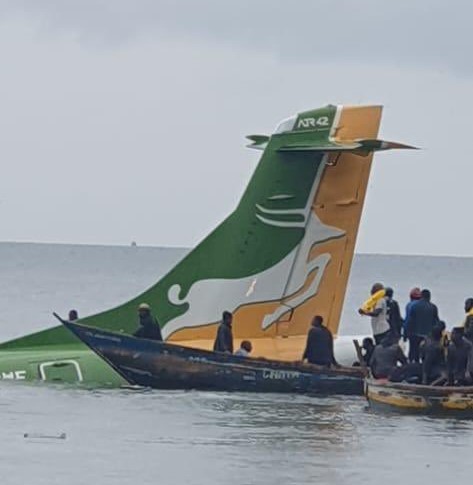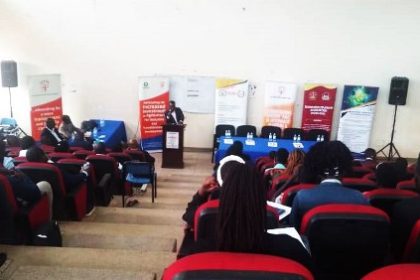IOSA measures up to its weight in gold

The skies were a safer place last year, with the International Air Transport Association IATA’s, 2022 airline safety performance report indicating a fall in accidents and the fatality rate. The year’s performance once again demonstrates the contrasting fortunes of carriers on IATA’s Operational Safety Audit registry, against those that are yet to sign up to the safety performance tool.
The world’s commercial airlines suffered only five fatal accidents, down from seven the previous year, with the data again affirming that IATA member carriers and others on the airline lobby’s IATA Operational Safety Audit (IOSA) were less prone to accidents.
The fatal accident last November in which 19 fatalities were recorded when a Precision Air ATR 72 crashed in Lake Victoria short of the runway at Bukoba airport, was the only one involving an IATA member airline. The China Eastern B737-800 crash which also contributed 132 of the 158 fatalities during the year, was by a non-IATA member airline although the carrier was registered for IOSA.
According to IATA, the all-accident rate for airlines on the IOSA registry in 2022 was four times better than the rate for non-IOSA airlines (0.70 vs. 2.82) while the five-year accident rate of IOSA airlines versus non-IOSA airlines was more than twice as good (0.88 vs. 2.19).
“With carriers on the IOSA registry having an aggregate safety record that is four times better than non-IOSA carriers, it is clearly continuing to make a difference,” says IATA Director General Willie Walsh.
“Now celebrating its 20th anniversary, we are transitioning IOSA to a risk-based model. By focusing on pertinent safety risks while maintaining a baseline of safety, IOSA will contribute to raising the safety bar even higher. Additionally, the IATA Standard Safety Assessment (ISSA), for operators of smaller aircraft that are not eligible for the IOSA program, ensures we look to deliver continuous improvement in safety performance across the whole aviation ecosystem,” said Walsh.
Sub-Saharan Africa and the turbo-prop segment in particular, continue to be areas of concern, with the region accounting for seven of the 13 turbo prop accidents during the year and an average accident rate of 3.26 per million sectors. Despite flying only 10.6 percent of sectors turbo-prop accidents accounted for four of the five fatal accidents last year.
Overall, the numbers correspond to a fatal accident rate of 0.16 per million sectors flown for 2022, compared to 0.27 per million sectors in 2021. That was also better than the five-year fatal accident rate of 0.20 per million sectors.
The fatality risk declined to 0.11 per million sectors from 0.23 in 2021 and 0.13 for the five years from 2018 to 2022. At that rate, a person would need to take a flight every day for 25,214 years before getting involved in an accident in which all occupants die. Last year’s rate betters the five-year fatality rate where the odds are a fatal accident on 22,116 years of daily flying.
The all-accident rate which includes non-fatal incidents fell to 1.21 per million sectors. Although that represented a reduction compared to the rate of 1.26 accidents for the five years from 2018 to 2022, it was a spike relative to the 1.13 accidents per million sectors registered in 2021.
“Accidents are rare in aviation. There were five fatal accidents among 32.2 million flights in 2022. That tells us that flying is among the safest activities in which a person can engage. But even though the risk of flying is exceptionally low, it is not risk-free,” IATA Director General Willie Walsh said in comments on the report.
“Careful analysis of the trends that are emerging even at these very high levels of safety is what will make flying even safer. This year’s report, for example, tells us that we need to make some special efforts on turboprop operations in Africa and Latin America. Safety is aviation’s highest priority, and our goal is to have every flight take off and land safely regardless of region or aircraft type,” he added.

 Shell Club rewards first winners with brand new motorbikes in Mbale
Shell Club rewards first winners with brand new motorbikes in Mbale
 CSBAG roots for increased funding for renewable energy
CSBAG roots for increased funding for renewable energy
 Equity walks tried and tested path to deliver solid half-year
Equity walks tried and tested path to deliver solid half-year
 Nile Breweries primes retailers for brave new world
Nile Breweries primes retailers for brave new world
 Uganda calls for collaboration with airlines in fight against illicit trade in wildlife
Uganda calls for collaboration with airlines in fight against illicit trade in wildlife
 Airline industry top guns dust-off passports for Uganda hosted 55th AFRAA annual meet
Airline industry top guns dust-off passports for Uganda hosted 55th AFRAA annual meet
